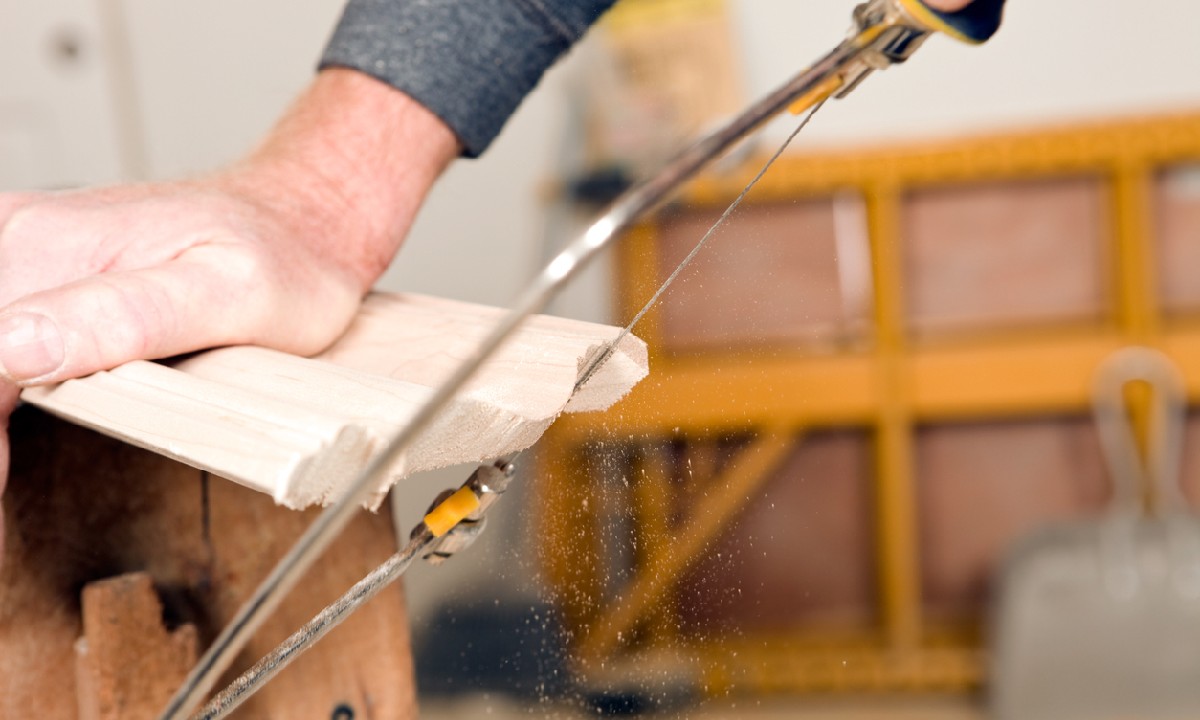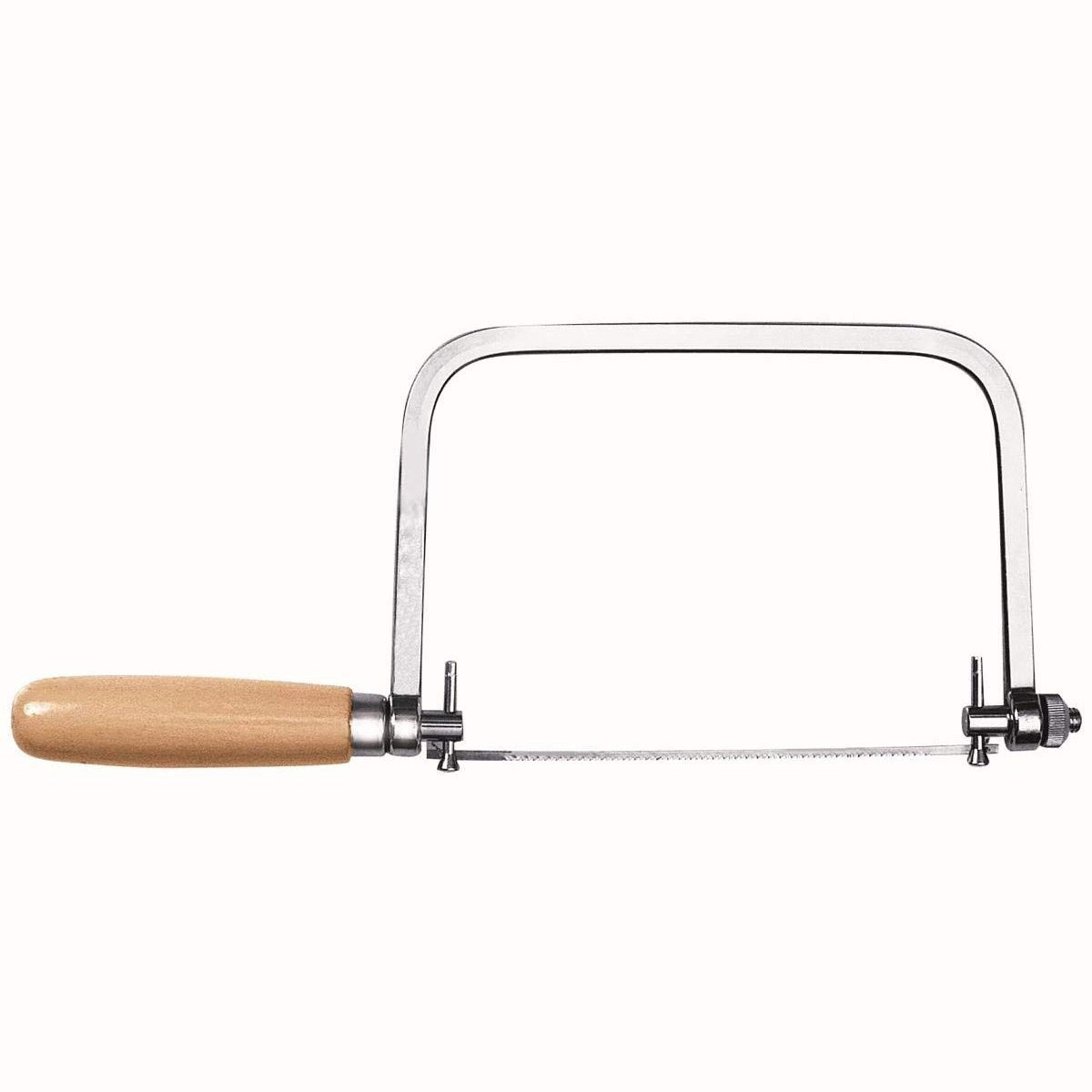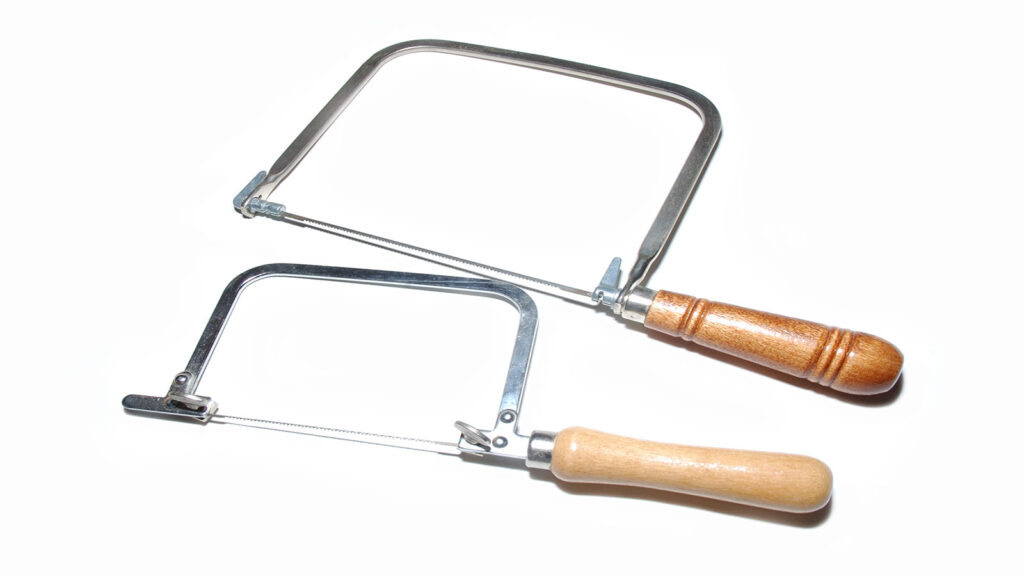A coping saw is a tool used for intricate cuts in wood and other materials. It has a thin, flexible blade that allows for precision.
Woodworkers, hobbyists, and DIY enthusiasts often reach for a coping saw when they need to make detailed cuts. This tool excels at cutting curves, intricate shapes, and tight corners. Unlike other saws, its design offers great control and flexibility. Understanding its uses can enhance your project outcomes and efficiency.
Whether you’re crafting furniture, working on home improvements, or indulging in creative projects, knowing how to use a coping saw can be incredibly helpful. Let’s explore the various applications and benefits of this versatile tool.
Introduction To Coping Saws
Coping saws are essential tools in woodworking. They are known for their precision and versatility. Whether you are crafting fine furniture or simple DIY projects, a coping saw can help. Let’s dive into the basics.
Brief History
The coping saw dates back to the 16th century. It originated in Europe. Early woodworkers used it for intricate cuts. Over time, its design improved. Today, it remains a favorite among craftsmen.
Design And Components
A coping saw features a U-shaped frame. This frame holds a thin, narrow blade. The blade is replaceable. It is tensioned by a handle. The handle is often made of wood or plastic. It allows for comfortable grip and control.
The blade can rotate. This allows for cutting curves and angles. The saw’s teeth face the handle. This design pulls the blade toward the user. It results in cleaner cuts. Coping saws are lightweight. They offer great maneuverability.
Primary Uses
A coping saw is a versatile tool. It is known for its thin, narrow blade, which allows it to make intricate cuts. The saw is used in various tasks, making it an essential tool in many workshops. Below, we will explore the primary uses of a coping saw.
Woodworking
In woodworking, a coping saw excels at making curved cuts. It can cut intricate shapes in wood. The saw is often used for cutting moldings to create perfect joints. Woodworkers also use it to remove excess wood in dovetail joints. The fine blade is ideal for delicate and detailed work. This makes it a favorite among furniture makers and carpenters.
Metalworking
A coping saw is not limited to wood. It can also cut through metal. With the right blade, it can cut thin metal sheets and pipes. Jewelers often use it to cut intricate designs in metal. The saw’s ability to make precise cuts is crucial in metalworking. It is a useful tool for hobbyists and professionals alike.
Cutting Techniques
A coping saw is a versatile tool. It excels in cutting various shapes and patterns. Understanding the cutting techniques can help you use this tool effectively. Let’s explore the main types of cuts you can achieve with a coping saw.
Straight Cuts
A coping saw can make precise straight cuts. Start by marking the cutting line on your material. Hold the saw firmly and align the blade with the marked line. Use steady, even strokes to guide the blade through the material. Keep your movements smooth. Avoid pressing too hard. Let the saw do the work. This technique is ideal for cutting trim and molding.
Curved Cuts
The coping saw is perfect for curved cuts. Mark the desired curve on your material. Position the blade at the beginning of the curve. Gently guide the saw along the marked line. Turn the saw handle to follow the curve. This technique requires patience. Move slowly to maintain accuracy. Curved cuts are useful for creating intricate shapes and patterns in wood.
Choosing The Right Blade
Choosing the right blade for your coping saw is essential for achieving precise cuts. Different blades are designed for various materials and tasks. Understanding the types of blades and their features will help you make an informed choice.
Blade Types
Coping saw blades come in several types, each suited for specific tasks. Standard blades are for general cutting. These work well with wood and plastic. Fine-tooth blades are better for delicate materials. They make clean and smooth cuts. Spiral blades can cut in any direction. They are useful for intricate designs and curves.
Blade Tpi (teeth Per Inch)
The TPI, or Teeth Per Inch, measures the blade’s coarseness. A higher TPI means finer teeth. This results in smoother cuts. For example, a blade with 15 TPI is perfect for detailed work. Lower TPI blades are coarser and cut faster. A blade with 7 TPI is ideal for quick cuts in thick materials. Choose the TPI based on your project needs.
Coping Saw Vs Other Saws
A coping saw is perfect for detailed cuts, often used in woodworking. It’s ideal for cutting curves and intricate shapes. Other saws are better for straight, quick cuts.
The coping saw is a versatile tool in woodworking. It is known for its precision in cutting intricate shapes. But how does it compare to other saws? Let’s explore the differences between the coping saw and other common saws.Coping Saw Vs Jigsaw
A coping saw and a jigsaw both cut curves and detailed shapes. The coping saw is manual, providing more control for detailed cuts. It has a thin, flexible blade that can turn easily. A jigsaw, on the other hand, is electric. It makes quick work of larger tasks. But it can be harder to control for fine details. The coping saw is better for smaller, intricate work. The jigsaw excels in cutting larger, less detailed pieces.Coping Saw Vs Hacksaw
Both coping saws and hacksaws have thin blades. Yet, they serve different purposes. The coping saw is mainly for wood. It creates detailed shapes and cuts. The hacksaw is designed for cutting metal and plastic. Its blade is stronger, making it ideal for tougher materials. In woodworking, the coping saw is the go-to for detailed cuts. The hacksaw is not suitable for such precise work. It is better for cutting pipes, rods, and other metal objects. “`
Credit: www.popularwoodworking.com
Safety Tips
Using a coping saw requires safety precautions to prevent injuries. Follow these safety tips to ensure you handle the tool correctly and protect yourself from harm.
Proper Handling
Always grip the handle firmly with your dominant hand. Use your other hand to guide the blade. Keep your fingers away from the blade’s path. This prevents accidental cuts.
Make smooth, even strokes. Avoid applying excessive force. This helps the blade cut efficiently and reduces the risk of breakage.
Check the blade tension before you start. The blade should be taut. A loose blade can break easily.
Protective Gear
Wear safety goggles to protect your eyes from flying debris. Small particles can cause serious eye injuries.
Use work gloves to protect your hands. They provide a better grip and shield your skin from accidental nicks.
Consider wearing a dust mask. This prevents you from inhaling sawdust, which can be harmful to your lungs.
| Protective Gear | Purpose |
|---|---|
| Safety Goggles | Protects eyes from debris |
| Work Gloves | Protects hands and improves grip |
| Dust Mask | Prevents inhalation of sawdust |
Maintenance And Care
Caring for your coping saw ensures it performs well and lasts long. Regular maintenance keeps the tool sharp and ready for any project. Let’s explore some essential tips for maintaining and caring for your coping saw.
Cleaning The Saw
After each use, clean your coping saw to remove dust and debris. Wipe the blade and handle with a dry cloth. This prevents rust and keeps the saw in good condition.
For tough dirt, use a mild soap with water. Dry the saw thoroughly to avoid moisture damage. A clean saw cuts better and requires less effort.
Blade Replacement
A dull blade makes cutting difficult. Inspect the blade regularly for signs of wear. If the blade is dull or damaged, replace it.
To replace the blade, loosen the tension knob. Remove the old blade and fit a new one in its place. Tighten the tension knob until the blade is firm and secure.
Proper blade tension ensures smooth cuts and reduces the risk of the blade breaking. Always use the right blade for the material you are cutting.

Credit: www.youtube.com
Advanced Techniques
Advanced techniques with a coping saw can elevate your woodworking projects. They allow for more detailed and intricate work. These techniques can help create unique and complex designs. Two main areas stand out: intricate patterns and joinery work.
Intricate Patterns
A coping saw is perfect for cutting intricate patterns. Its thin, flexible blade makes it easy to follow detailed lines. This is useful for creating decorative elements. Think of fretwork or delicate inlays. By using a coping saw, you can achieve precision. The saw’s design allows for tight turns and curves. This makes it easier to work on small pieces. Always ensure your blade is sharp. A dull blade can make intricate cutting difficult. Practice on scrap wood before tackling your final piece.
Joinery Work
Joinery work often requires precise cuts. A coping saw can help here too. It is ideal for cutting dovetail joints. These joints are strong and decorative. The saw’s thin blade ensures clean, tight fits. Another use is for coping joints. This is common in trim work and molding. The saw cuts along the profile of the piece. This allows for a perfect fit against another piece. Accuracy is key. Take your time with each cut. Proper technique ensures a professional finish. Your joinery will look clean and well-crafted.

Credit: www.familyhandyman.com
Frequently Asked Questions
What Is A Coping Saw?
A coping saw is a hand tool used for cutting intricate shapes in wood, plastic, or metal.
How Do You Use A Coping Saw?
To use a coping saw, secure your material, insert the blade, and carefully follow the marked line while sawing.
Can A Coping Saw Cut Metal?
Yes, a coping saw can cut metal. Use a blade specifically designed for metal cutting.
What Materials Can A Coping Saw Cut?
A coping saw can cut wood, plastic, and metal, making it versatile for various projects.
Conclusion
A coping saw is a must-have tool for precise cuts. It works well on wood, plastic, and metal. Easy to handle, it helps create intricate designs. Perfect for DIY projects and professional tasks alike. Keep one in your toolbox for versatile cutting needs.
Remember, practice makes perfect. Experiment with different materials. You’ll soon appreciate its value. Enjoy your creative projects with a coping saw. Happy crafting!
